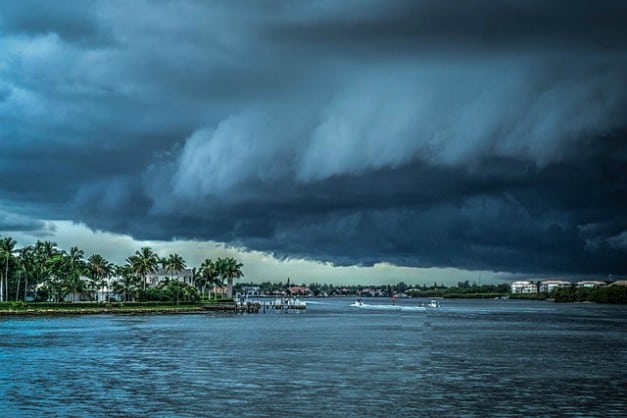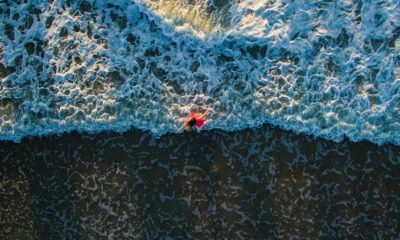Destinations
Florida, Caribbean Tourism Returns to Normal After Hurricane Irma

Atlantic’s 2017 hurricane season, which included Hurricane Irma, was one of the costliest and deadliest seasons in American history. Many media outlets reported that these storms devastated several tourist-dependent areas. Six months later, it is back to business as usual for Florida and the Caribbean.
Hurricane Irma Blows Visitors Away from Florida and the Caribbean
Hurricane Irma and other storms with innocent names like Harvey and Maria last year posed ominous threats for popular tourism areas in the Caribbean, Florida and Puerto Rico.
These were some of the most devastating and expensive storms in American history and generated headlines such as “Entire island is without power” (Puerto Rico) and “Area looks like a war zone” (British Virgin Islands).
But after the storms, it didn’t take long for reasons to believe the welcome mat was out again in most destination doorways – with perhaps one exception: Puerto Rico.
Some Destinations in the Caribbean Unaffected
Despite the media accounts, not all popular sun and fun areas were impacted while many others were spared entirely. The Caribbean has 7,000 islands, for example, and only a handful were heavily damaged. More than two thirds – or 70 percent – of Caribbean destinations were not affected, according to the Caribbean Tourism Organization (CTO).
But how a visitor supply that narrowed to a trickle started to again become a flood is a testimony to the economic incentives for tourism; quickly organized local efforts to restore damaged properties; and the creative efforts of agencies promoting the changing situation.
That is particularly true for Visit Florida, the state’s recently controversial but always aggressive and number-oriented agency to promote the state’s largest and most profitable business: tourism. Realizing that the perception was that all of the state suffered, the agency acted quickly to regain Florida’s place as the No. 1 domestic and international destination. The agency hired Nielsen Entertainment to monitor post-Irma sentiments, which found the state had lost $500 million in tourism visitation.
Florida Tourism Agencies Launch Recovery Campaigns
A recovery campaign involved a three-phase effort: social channels, website and traditional TV advertising. The campaign began to show photos and videos of a restored state and particularly its pristine beaches. The campaign focused much of its efforts on The Keys and particularly Key West, which was hit by the well-documented Category 4 Hurricane Irma winds of 130 miles per hour.
But the Monroe County Tourist Development Council had its own novel plan to bring back visitors to areas such as Key West, where tourism accounts for 60 percent of the economy and more than half of the island jobs. Just one month after Hurricane Irma’s landfall in the Keys, the tourism agency began showing hurricane-damaged scenes.
“I don’t think any tourism agency out there would show scenes of Hurricane [Irma’s] damage. But I think you need to be honest,” spokesman Andy Newman explained.
The comeback of the Keys acknowledged some damage but pointed out the area was also open for business again. Its speed was remarkable. Room nights in the wake of the storm were only 35 percent full during the normally busy season in Key West, according to data analytics firm STR.
A month later, everything had changed. Cruise ships began docking and tourists were trickling back in. CTO also immediately went to work promoting visitors. A key point in its media message was that 70 percent of destinations were not affected by the storm.
Beaches by now have generally been cleared of debris, popular dive centers reopened, and hotel rooms are again near normal occupancies. Even the exception, Puerto Rico, is on its way back. Nearly all of its major airports, including Rafael Hernandez Airport and Ponce, are now open. Cruise ports are also again welcoming ships.
‘Rebuild Days’ Contribute to Hurricane Irma Recovery
The Puerto Rican Tourism Company held a successful series of “Rebuild Days” where it urged supporters of the island to come and contribute to its recovery. Some of the campaign promoted similar “do-good” efforts.
“One of the best things people can do to help the Caribbean recover is to plan a vacation to the region,” said Frank Comito, CEO and director general of the Caribbean Hotel and Tourism Association.
But there are also practical incentives, such as economics. Discounted prices are becoming far more common everywhere. And Cuba as well, which also had damage from Hurricane Irma. Large discounted prices are now available at foreign and state-run hotels. The highly popular Spanish hotel operator Melia is offering 50 percent off rooms in several Cuban cities.
Areas that include not only Cuba but much harder hit Puerto Rico are getting back to normal. But the process is sometimes described as gradual. There are media reports that Puerto Rico may not get back to full restoration of all its facilities until next May.
So if you are planning a visit to any hurricane-stricken area, you might want to check with your travel agent or a destination website – just to be sure that nothing has been blown away.





